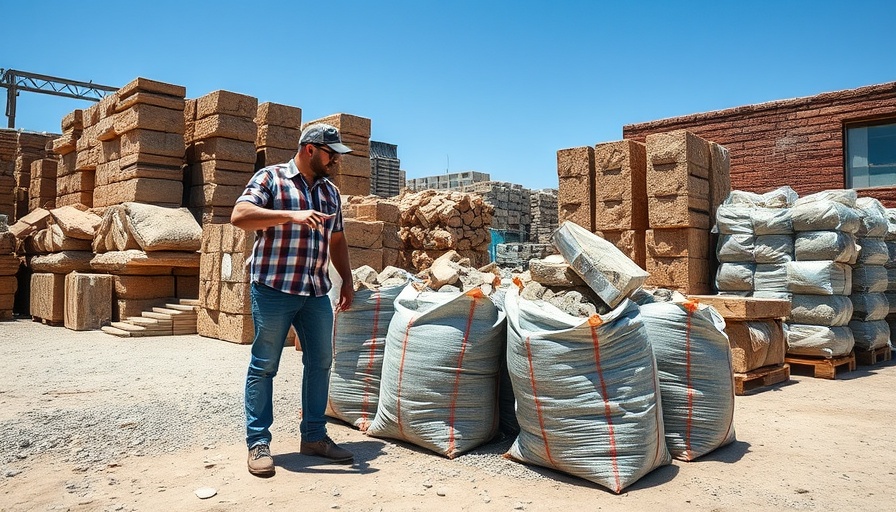
Discover the Essential Landscaping Materials for Your Backyard
Whether you're planting a flourishing vegetable garden or transforming your backyard into a peaceful retreat, understanding the right landscaping materials is crucial. As discussed in the video Top Landscaping Materials Every Backyard Needs | Great Home Ideas, these materials not only support the health of your plants but also enhance the aesthetic appeal of your garden. From selecting the ideal soil to incorporating decorative features, let's dive into the essentials that make for a successful outdoor space.
In 'Top Landscaping Materials Every Backyard Needs | Great Home Ideas', the discussion dives into the crucial elements that contribute to successful garden design, prompting us to analyze the key insights while expanding on their practical applications.
The Foundation: Choosing Quality Soil
At the core of every beautiful garden lies healthy soil. Your choice of soil mix can significantly affect your plants' growth. The video outlines a few types of soil, including a general garden mix suitable for most plants, a premium garden mix designed for specific species like azaleas, and even specialty mixes for unique garden setups such as green roofs. This illustrates the complexity of gardening and emphasizes the need for proper soil health as the foundation of your garden's success.
Mulch: The Multifaceted Protector
Mulching is an essential garden practice that offers numerous benefits. It slows water evaporation, suppresses weeds, and enhances your garden's appearance. The video emphasizes the importance of selecting the right type of mulch for your specific plants. Coarse mixes work well for larger trees, while finer varieties provide a polished look suitable for flower beds. Understanding the different options allows you to maintain a vibrant and healthy outdoor space.
Decorative Elements to Elevate Your Garden Design
No garden is complete without some decorative finishing touches. Crushed granite can give a contemporary feel while allowing water to reach the soil beneath, making it perfect for arid climates. Similarly, pebbles serve practical purposes as well as contributing to the garden's visual design. Picking the right pathway materials can create a welcoming atmosphere, making your garden both functional and beautiful.
Value of Sustainable Gardening
As our world becomes increasingly aware of environmental sustainability, incorporating eco-friendly practices into gardening is more important than ever. By using materials that are sustainable and choosing organic gardening techniques, you not only benefit your immediate environment but also contribute to the broader ecosystem. Consider implementing drip irrigation systems or utilizing compost to enhance soil quality, allowing for a flourishing garden.
Actionable Insights for DIY Enthusiasts
If you’re a DIY enthusiast looking to spruce up your backyard, start with simple projects such as raised garden beds. Not only do they improve drainage, but they can also be an attractive addition to your garden. For larger projects, consider how seating and outdoor decor can complement your landscaping efforts, adding both function and comfort to your outdoor experience.
Engaging with Your Community Through Gardening
Gardening can also foster a sense of community. Think about starting a community garden or participating in local gardening meet-ups. Sharing knowledge and resources contributes to a closer-knit community while enhancing individual skills. Plus, nothing beats the satisfaction of enjoying produce that you've nurtured yourself!
With spring in full swing, now is the perfect time to head out into the garden and put these materials and insights into practice. From creating a vegetable patch to establishing a flower bed, the possibilities are endless. Embrace your backyard's potential and create a space that reflects your personal style and values.
The right landscaping materials can elevate your backyard into a sanctuary. Explore innovative ideas, engage in sustainable gardening practices, and enjoy the beauty that comes with nurturing your plants. Remember, gardening is a journey; every step you take brings you closer to a vibrant living landscape.
 Add Row
Add Row  Add
Add 




Write A Comment